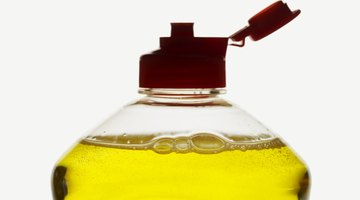How to Clean Punched Tin Panels
Punched tin was commonly used as inserts in the doors of cabinets, cupboards and pie safes in the days before refrigeration. Tin was an inexpensive, widely available material, and punching very tiny holes in it kept food aerated while keeping out dust and insects.

Eventually, punching designs into the tin became an art form, and furnishings featuring punched or pierced tin are now highly prized as collectibles. Punched tin is not only found on old pieces; it's experiencing a resurgence in popularity in country-style furnishings. Whether your punched tin is old or new, cleaning it properly will ensure it will remain attractive and retain its value.
-
Put on work gloves to avoid cutting yourself on any sharp pieces of tin.
-
Wipe dust off the tin panel with a soft cloth. If any of the dimples or indentations in the punched design are clogged with dirt or debris, use a wooden toothpick or an old tooth brush to loosen and remove it.
-
Check your punched tin panels for mold, mildew and rust. If any of these are present, you may be able to remove it with a very fine steel wool. Moisten the steel wool with cold water and rub it first in an inconspicuous area. If the steel wool does not damage the tin, scour all of the problem areas with it carefully.
-
Wash punched tin with a soft rag, cold water and a mild dish detergent only if stubborn dirt, grime or grease won't come off with a dry rag. Rinse the tin with cold water after using a detergent.
-
Wipe off excess moisture immediately after cleaning tin with water. Use a soft, dry cloth. Blow the tin with a hair dryer set on warm for a few minutes to ensure the tin panel is completely dry, inside and out.
-
Apply a small amount of car wax to your tin doors with a soft cloth. Rub it in well using a circular motion. Use a dry cloth to remove excess wax and buff the tin to a shine. The wax will help protect the tin from moisture and dirt.
Things You Will Need
- Work gloves
- Soft cotton cloths
- Very fine steel wool
- Toothpick
- Old toothbrush
- Mild dish detergent
- Cold water
- Hair dryer
- Car wax
Tip
If you are concerned about preserving the value of an antique, take tin with rust, mold or discoloration to a qualified antique restorer.
Warning
Never use warm or hot water to clean tin. Never soak tin in water. Always dry tin thoroughly.
References
Photo Credits
- George Doyle/Stockbyte/Getty Images
- George Doyle/Stockbyte/Getty Images
More Articles



